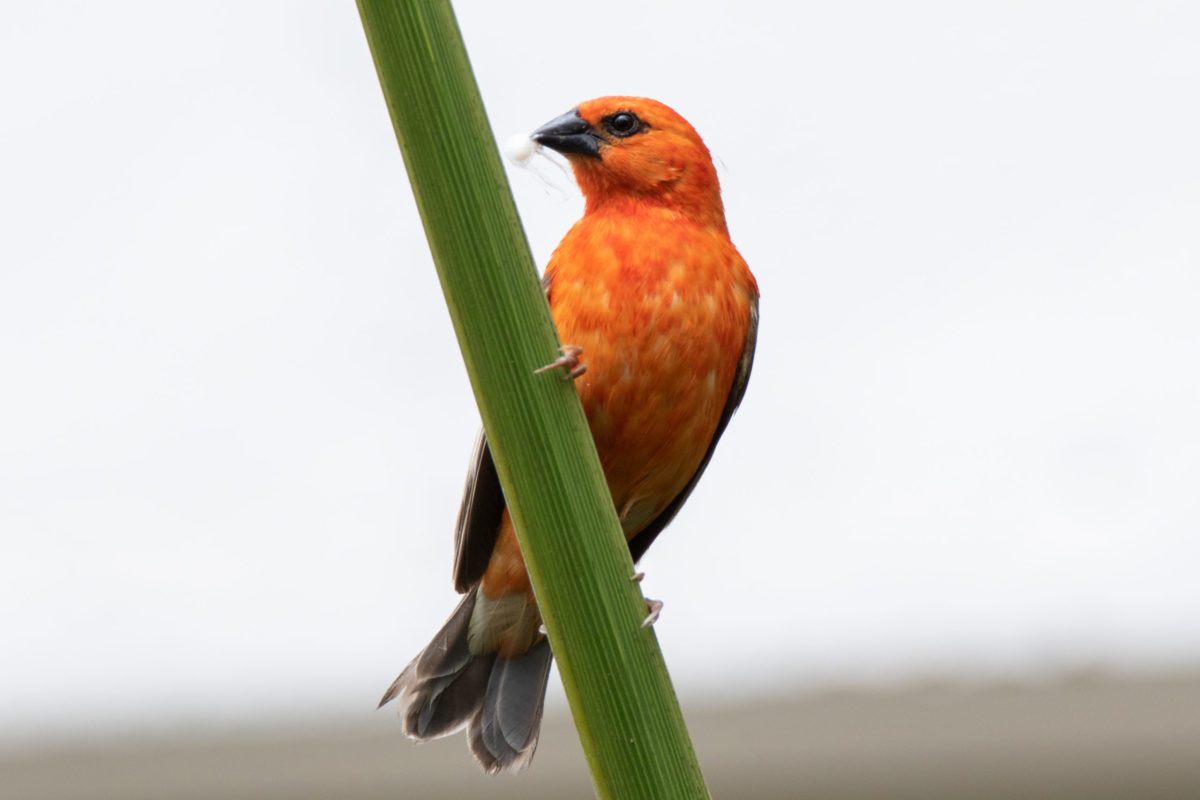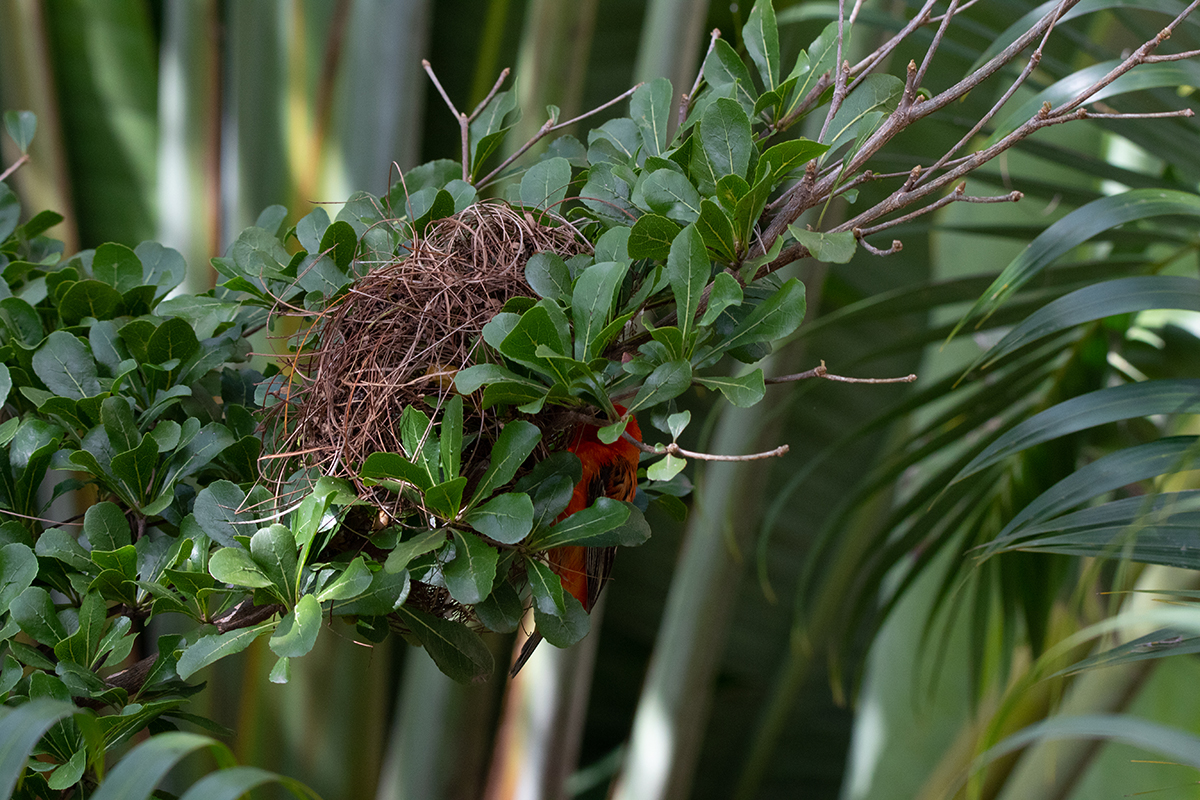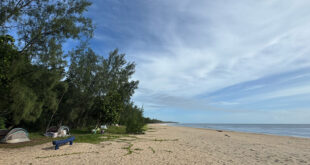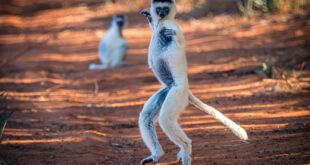Everything is a bit more colourful in Madagascar – even the sparrows on the roofs! The best example of this is the Madagascar Fody (Foudia madagascariensis). The Malagasy call him Red Fody, sometimes spelt Fodi or Foudi. Fodys are distributed all over the country. They are considered one of the most common birds in Madagascar. They can be found near rice fields and lakes, in gardens, palm and vanilla plantations and even in the city centre of Antananarivo. Only in dense forests are Fodys not to be seen – they do not like closed rainforests.
Madagascar weavers live together in dozens
Madagascar Fodys are social birds. They are usually found together in dozens during the dry season, in small and larger flocks. Madagascar Fodys are not particularly popular with rice farmers. They feed mainly on seeds, especially seeds of sweet grasses. To the farmers’ chagrin, these include millet and maize as well as rice, which they eat directly from the ears during yellow ripening. They then invade the rice fields in swarms. The rice farmers try to drive the fodies away with scarecrows and noise, but this is not always successful.

However, Madagascar Fodys are basically not choosy. In addition to seeds, their diet also includes insects and spiders, fruits and nectar from, for example, Wandelröschen. In villages and cities, some populations feed to no small extent on human food waste, including coconuts, but also sometimes cooked rice, chips or bread crumbs.
Plumage colour determines mating success
During the mating season at the end of the dry season, the Fody male begins to build a nest. Within a week, it weaves a round nest cavity out of grasses, thin branches and vines, with the entrance hidden behind a short tube. The nests hang down from branches, palm ribs or tall grass and gently blow back and forth in the wind. The more beautiful the nest, the greater the chance of impressing a beloved. Each male vehemently guards his territory against rivals. Anyone who does not belong to the nest is chased away from about 30 metres of the surrounding area. Only together with other fodies do they sometimes form rather loose colonies.
The female chooses her favourite nest and the male who belongs to it. The brightness of the male’s plumage plays a big role for her. The redder the plumage, the fitter the male. Once a pair has been found, the female lays two to four white eggs in the common nest. She then incubates the eggs alone. After less than two weeks, the young Fodys hatch and are now cared for by both parents together. After another two weeks, they are already fledged. The breeding season of the fody lasts throughout the rainy season and into May. The pairs stay together the whole time and raise one to four clutches per season, depending on the location and duration of the rainy season.

By the way: Only the males wear the bright red plumage with a dark mask around the eyes, on the wings and on the tail. This is their magnificent plumage and can only be observed in the mating season. In so-called plain plumage outside the mating season, they are often orange in colour. The females, on the other hand, are inconspicuously brownish all year round, similar to European sparrows, even though they are not related to them.
Red Fodys are now also native to other islands in the Indian Ocean. From Madagascar, they started their triumphant march to the Comoros, Seychelles, Mauritius and La Réunion many years ago.
 MADAMAGAZINE Your Magazine about Madagascar
MADAMAGAZINE Your Magazine about Madagascar




